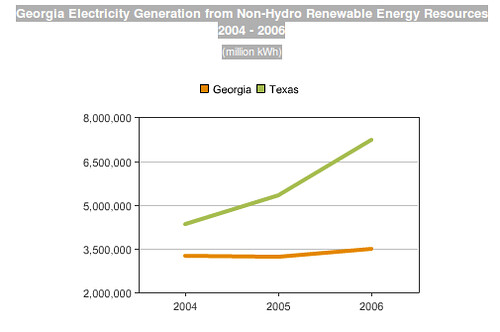How did Texas do that, and how can Valdosta and Lowndes County help Georgia catch up?
Some years back, Austin, Texas, which has been growing rapidly for decades, needed to find a way to produce more energy. Building a coal plant was not really an option for a city that had long sold itself as a home of green industry. Nuclear had a bad taste because in the 1980s Austin had been an investor in the South Texas Nuclear project, which had been late, over budget, never produced what it was supposed to, and had many political problems. So Austin settled on a new plan: instead of spending big bucks to build a dirty coal plant, use the same money to give rebates to homeowners and businesses for installing solar power. Big rebates: 75%, the largest, and among the first in the country. This made perfect economic sense, producing as much new energy as needed, without coal or nuclear, and distributed where it was needed.
Now Austin is trying a new wrinkle:
The Austin, Texas, city council has approved Austin Energy’s solar incentive program, which includes a new approach for commercial, multifamily and nonprofit customers. The new approach saves $2.4 million over the life of the program, according to the utility.
Rather than provide an up-front rebate on the installation of solar systems, Austin Energy will pay for each kilowatt-hour of electricity produced over a 10-year period. This fixed, performance-based incentive (PBI) achieves two goals: First, it provides a fixed payment flow to a system owner by which payback can be calculated, the utility explains. Second, it encourages proper design and maintenance of systems to maximize their production.Now the city council of Austin can do this because Austin owns Austin Energy. Neither Valdosta nor Lowndes County owns an electric company. However, if local governments can give money and a turn lane to PCA to green up via biomass and if they can rezone for Wiregrass LLC to install a biomass plant, it seems they could find a way to do something like what Austin is doing. And if not local governments, the state has already required electric utilities to connect renewable energy sources if somebody else installs them, and to pay back some amount for net energy generated. If the state wants more energy generated, it could find ways to further encourage renewable energy.Over the next five years, the PBI program is expected to pay, on average, $0.08/kWh of solar energy produced with program funding sufficient for almost 260 solar systems, each up to 20 kW in size. Total PBI payments over the next 14 years under the plan are projected to be $4.8 million.
Austin Energy residential customers can apply to receive rebates at $2.50 per watt, with annual rebates limited to $15,000 and maximum rebates set at $50,000 over the life of installations at a single property.
Add to that retrofitting for energy efficiency, and there would be no more need for coal plants.
Short Link:
